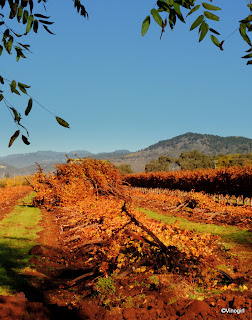
It's not everyday that you get to have a $600 bottle of wine with lunch, and for me lunch this past Monday was no exception. It was Vinomaker who shared a bottle of 2007
Domaine de la Romanée-Conti
Éch
ézeaux during a business lunch at
Celadon in downtown Napa. Vinomaker, altruistically, took time away from his busy day job to help facilitate the smooth installation of a new Chief Financial Officer at a winery that he regularly works with. What a sacrifice!
I have always been a firm believer in the maxim that states that the best expensive wine that one might enjoy is the expensive bottle of wine that one didn't pay for oneself (of course, I just made that up). Yet, Vinomaker, not known for being much of a Francophile, was left relatively unimpressed by the contents of this expensive bottle of DRC. The two of us are not huge Pinot noir fans on the best of days, but I was at least curious as to how this wine tasted.
I am not ashamed to admit that I pulled the cork from the empty bottle, that Vinomaker had teasingly brought home, and poured the 3-4 ml of wine, that had collected around the punt, onto my tongue. The wine was definitely Pinot-like, surprisingly very spicy, quite oaky (I'm sure due to this wine's obvious youthfulness), but showed great acidity and balance. I gleaned all this from mere dregs, so I'm thinking a whole glass of this very expressive wine must've been quite a treat. Instead, the reality is that Vinomaker went to lunch...and all I got was this lousy bottle!








